Reframing FRANZ ANTON MAULBERTSCH (attributed), study for The Presentation of Christ in the Temple, Cleveland Museum of Art
Posted: 04 May 2023 by PML
Franz Maulbertsch (1724-96) was a Viennese artist whose work was sought after for castles and churches across the Austro-Hungarian Empire. He had been particularly influenced by Venetian Rococo painting, and his wall, ceiling and easel paintings are all infused with the airy lightness of Tiepolo and Piazzetta: see, for example, his fresco, Allegory of Time and Light at the imperial summer palace, Schloss Halbturn.
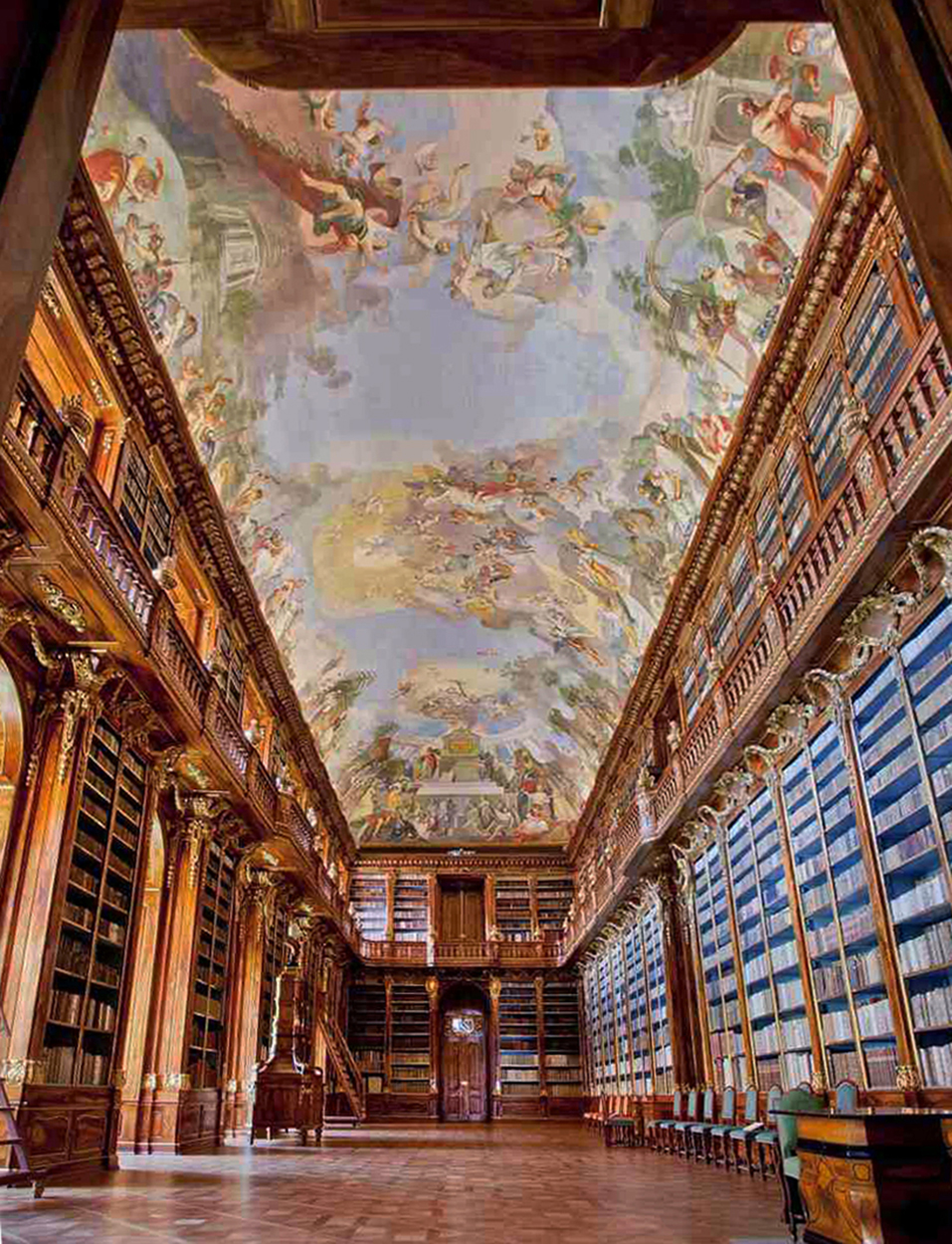
In 1794, when he was 70, he painted the vast ceiling (32 metres in length) of the Philosophical Hall, part of the library of the Hungarian monastery at Strahov, setting the intellectual progress of mankind against a radiantly-lit sky where Christianity, philosophy and science meet and grow from each other. His church frescos are equally light-infused and almost insubstantial, using the delicate technique of his Venetian models to create an impression of the celestial and transcendent.
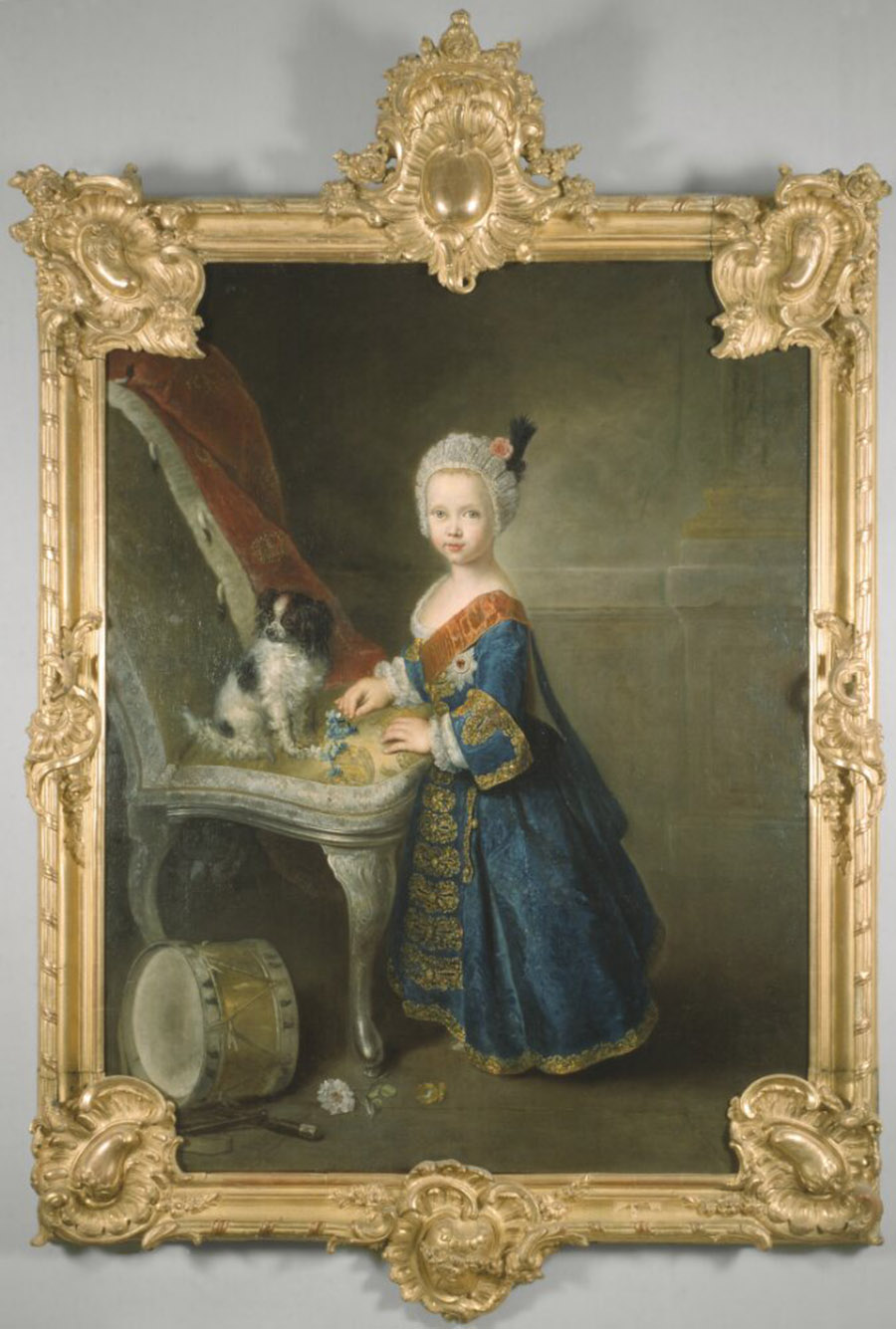
The original frames for German, Austrian and Hungarian easel paintings in this style were created in exactly the same spirit. They are notable for their slender rails of plain and unadorned mouldings which erupt at the centres and corners into wing- and flame-like extravaganzas of flyaway woodwork, as though great golden butterflies had alighted there. They were designed to complement interiors designed in the spirit of full Rococo flamboyance, such as those in the German palaces of Berlin and Potsdam, and to highlight the paintings installed there. The frames carved for Frederik I of Prussia and his son, Frederik the Great, encapsulate the use of the frame to emphasize and aggrandize the royal portrait (even when it depicted a child), and the same idiom was transferred to paintings of the divine King, Christ.
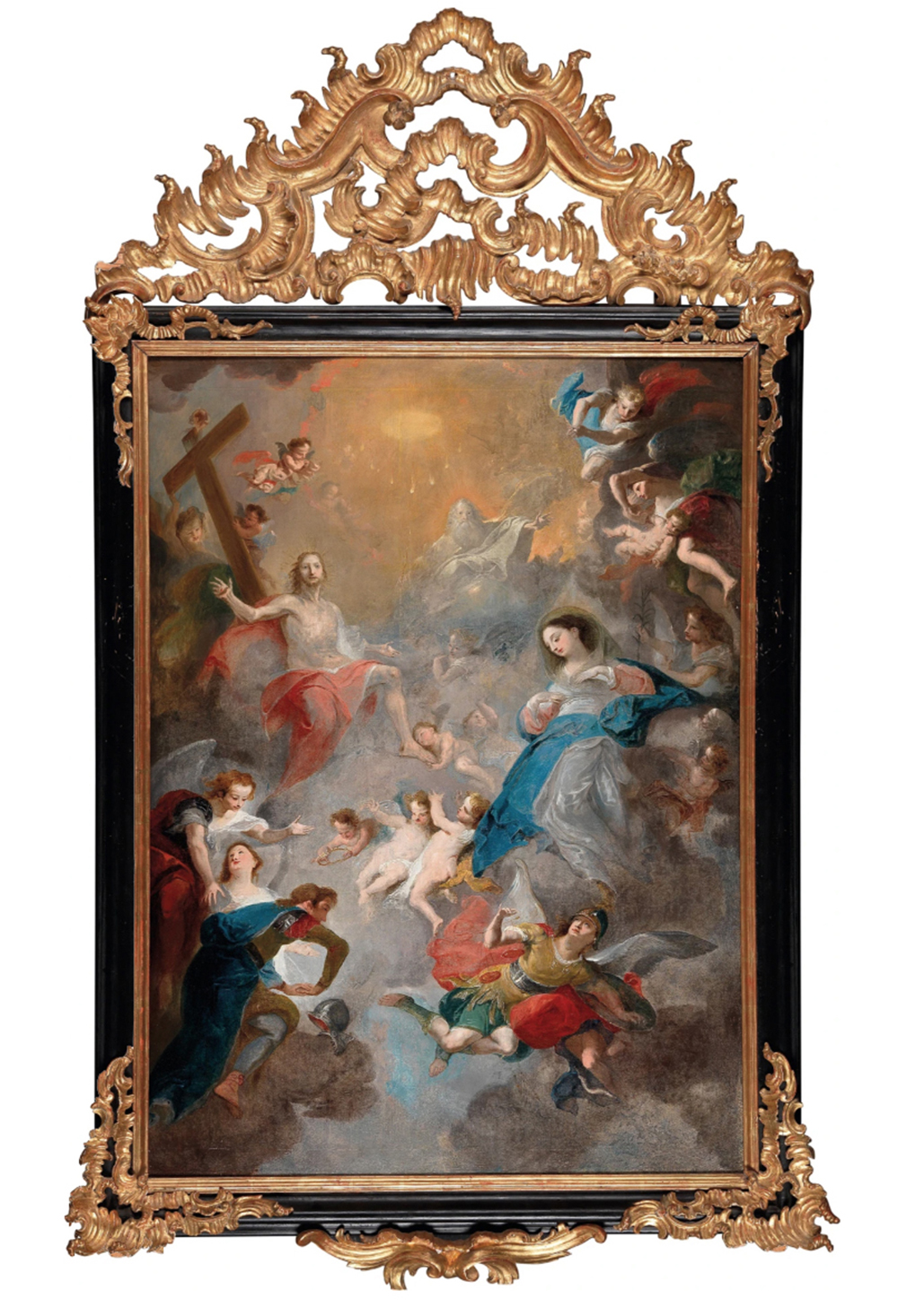
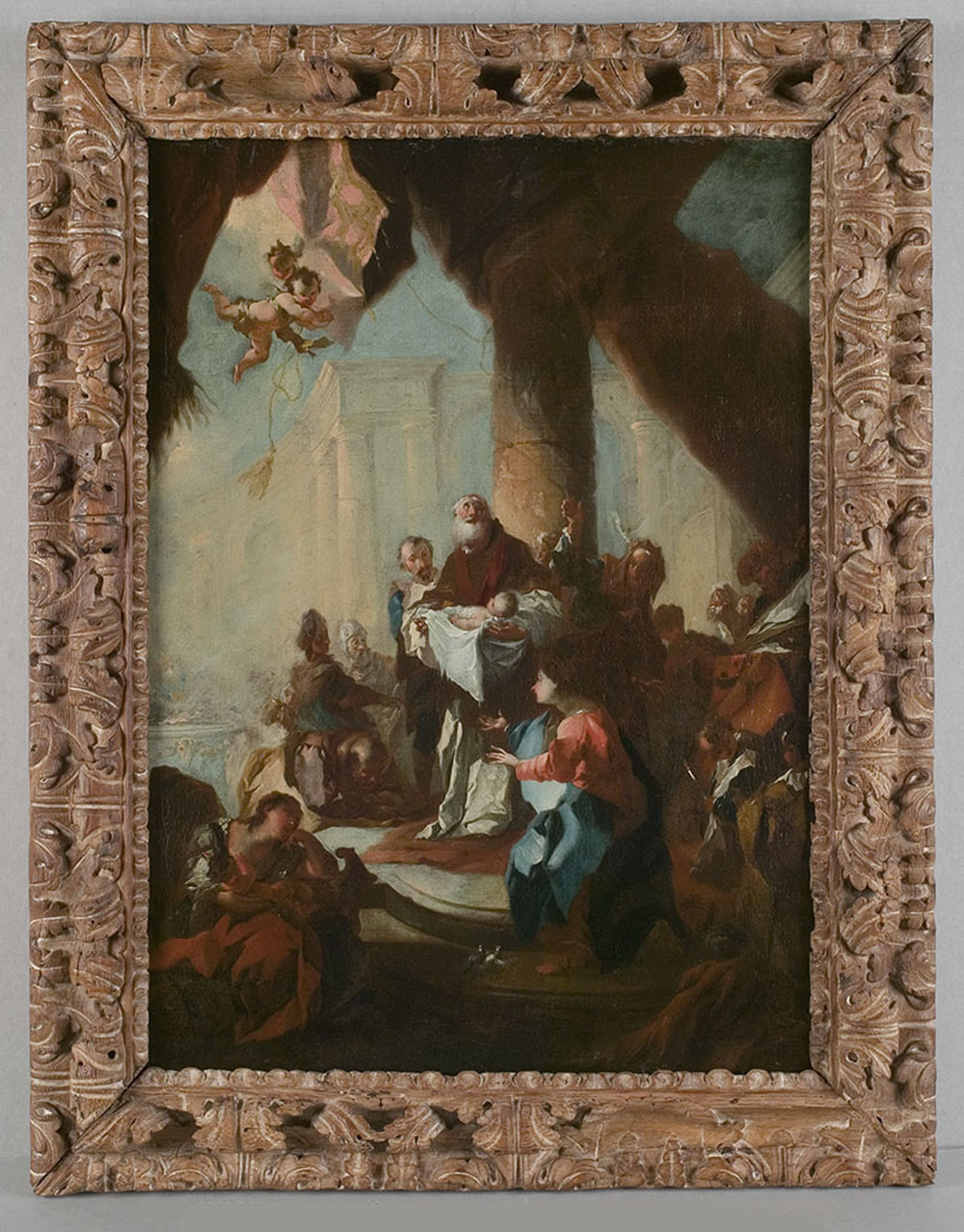
However, when the Cleveland Museum of Art acquired Maulbertsch’s study for a Viennese altarpiece, the Presentation of Christ in the Temple, it was entombed in a very heavy Baroque leaf frame, which had clearly been cut-down from a much larger piece to fit the canvas, and was entirely at odds with the style of Maulbertsch’s painting. It had also been stripped of its original gilding, deadening the colour and light of the latter, and closing down the whole composition.
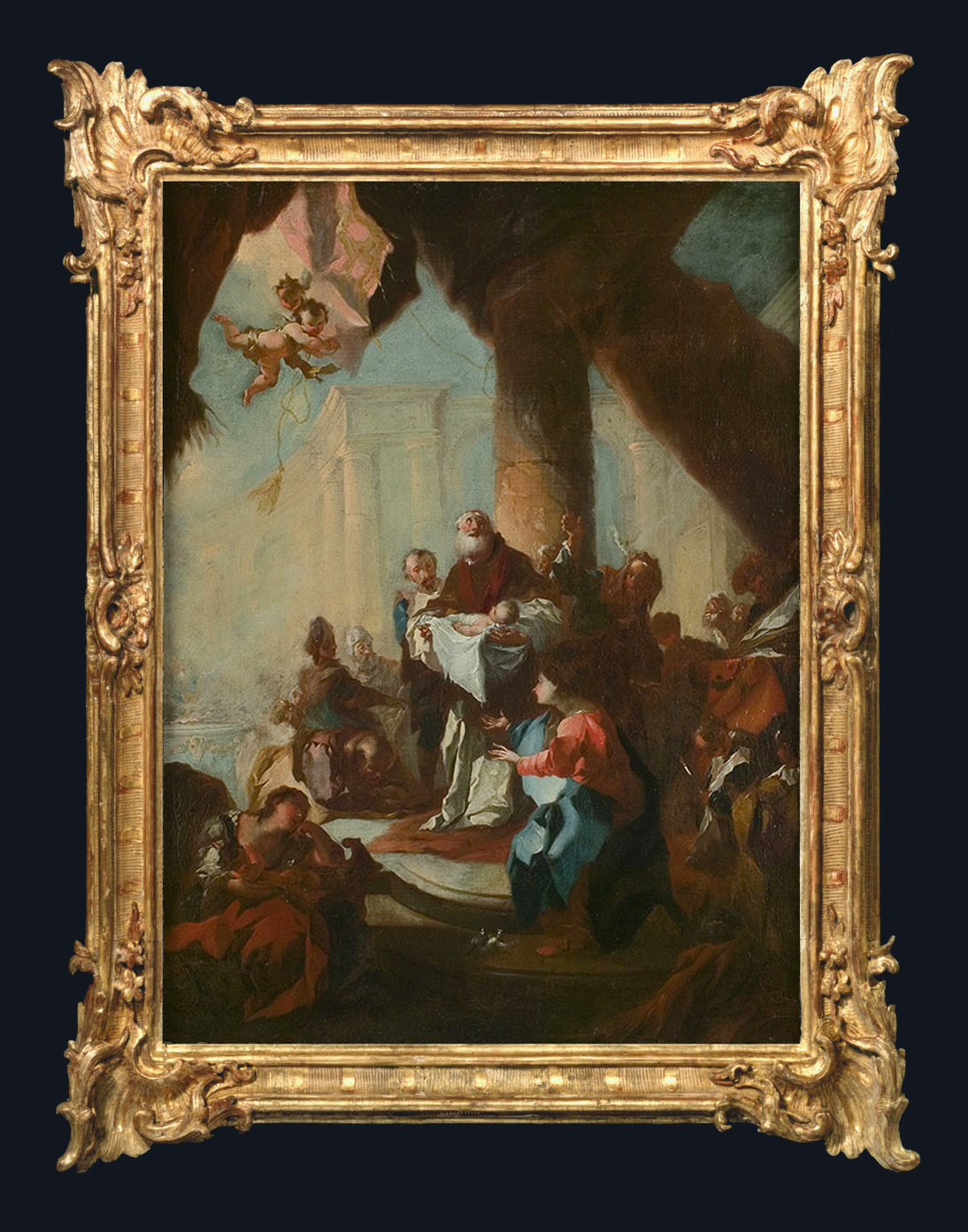
The giltwood frame supplied by Paul Mitchell Ltd restores to the painting its sense of porcelain colour and celestial light – the melting of the earthly landscape into insubstantial clouds behind the reality of the Incarnate Christ. It also heightens the feeling of verticality and aspiration in the work, as though the rocailles at the top of the frame were winging their way heavenwards, fired by the answering rocket-like flames of the rocailles at the base. The slender golden rails are decorated only by fluted panels between reposes, incised freehand into the gesso coating of the wood, and by the carved floral sprigs which stray from the corners along the hollow moulding. These include narcissus flowers at the top (for youth, spring and renewal), and tiny lilies for purity at the bottom.
Please click here to view further examples of distinguished pictures we’ve framed.
